#* BILL LIM / narrative .
Text
character: bill
open: f/nb — 24+ only
plot: bill is part of the notorious los lobos locos gang; your muse is very much not part of the criminal world, but recently was held hostage by masked men after a bank heist gone wrong. a few weeks later, your muse starts to date a nice man named bill that works in real estate development. unbeknownst to her, her new boyfriend bill was actually one of the men that held her hostage. only dating her to keep an eye on her and make sure she doesn't recognize him or rat on his crew, he might be falling for her for real. ( based on the town ) the only requirement is no jessica henwick fcs, as that’s his sister’s canonical fc, and nothing t*boo. it's up to you if she's completely oblivious or maybe has her suspicions!
this post was made using beta editor, please do not reblog it in legacy as i no longer have access to it!

at first there had been a perverse excitement to it. naturally duplicitous, bill often felt duper's delight in his normal life, but there was an extra thrill to his current con. she had no idea that the man that held a gun to her head a month ago was the exact same man that had taken her on three dates so far. it only started because gabriel got paranoid that she'd recognized them and then logan suggested they'd go back and finish the job. so really, in a way, bill was saving her life. of course he found her beautiful when he was holding her at gunpoint, but there was rarely a woman around that bill didn't find beautiful, and by 'saving' her, he was saving himself and the lobos. it wasn't the worst way to spend his nights, so he didn't mind sticking around just to figure out what she knew and who she was going to tell. that night, on their fourth date, he had taken her to a piano bar that was on the other side of the city. taking a sip of his whiskey, he set the glass back on the table and leaned back in the booth, "so how are you feeling? are you still have nightmares about the heist?" bill asked, desperate to ask her if she had seen or suddenly remembered the wolf tattoos that decorated the masked men's necks—the same one that was inked onto bill's, sitting just beneath the collar.
#indie rp#indie crime rp#indie para rp#indie starter#indie roleplay#1x1 rp#open rp#* STARTER / open .#* BILL LIM / narrative .#normally he's not part of a bank heist crew as the gang is more white collar crime. credit card fraud and money laundering that kinda thing#but i was just thinking abt this movie while at work and was like hmmm. i gotta do it. i'll do an au idgaf#queue are my queen rebecca!
24 notes
·
View notes
Text
random muse generated starter for @fiinalgiirls. / #10 (Bill) & #12 (Leticia).

“oh shit! oh shit! oh shit!” bill excitedly chanted, running hurriedly down the parking garage level, leti by his side. thank god for her long, beautiful legs. he was laughing erratically, not exactly stealthy for someone trying to run from danger, but bill found humor in just about any dangerous activity. this time, he brought leticia with him, and they nearly got caught. nearly! an important distinction!
#fiinalgiirls#* starter. closed.#* narrative. bill lim.#* thread. bill & leticia.#that's it. that's all u get#obviously based on the gif lmao idk where this is going#i cheated bc i was struggling to get a good pairing bc i kept getting muses that were like twenty years apart in age lol and different vibes#so i kept leti and just kept randomizing until i got someone that could work
3 notes
·
View notes
Text
@fiinalgiirls sent: 💬 Tovah and bill
"move away from the door and let me at him."

#starter › closed.#fiinalgiirls#bill lim › narrative.#( bill. ) tovah.#( verse. ) necropolis.#perhaps benny? bc we know they don't like each other lol#but it can be anyone bill's hard to get along with
1 note
·
View note
Text
Queer East Film Festival (15 - 26 September) is delighted to unveil its full programme centred on queer storytelling and activism from East and Southeast Asia. This year’s programme includes a selection of 37 features, short films and artists’ moving image works from 15 countries, ranging from new releases to classic retrospectives, mainstream box office hits to radical independent works, accompanied by pre-screening introductions and filmmaker Q&As. A series of online panel discussions with international guests will run throughout the festival period, covering topics such as women in the film industry, queer film festivals, and the development of Asian LGBTQ+ movements.
Launched in 2020, Queer East is a new film festival that aims to amplify the voices of Asian communities in the UK, who have often been excluded from mainstream discourse, despite Asians being one of the country’s fastest-growing ethnic groups. Queer East seeks to facilitate a better understanding of the richness of queer Asian heritage, and to bridge the cultural distance between the UK public and the region. Featuring works made by international filmmakers and Asian diaspora communities, and looking to foster authentic voices, the festival explores a wide range of perspectives, showcasing stories that intersect with personal experiences, cultural norms, and socio-political transitions.
The second edition of Queer East opens with the UK premiere of Daughters (2020), the directorial debut of Hajime Tsuda from Japan; and will close with the multi award-winning Dear Tenant (2020), directed by Taiwanese filmmaker Yu-Chieh Cheng.
This year, the world’s spotlight shone on Japan as the host country for the Summer Olympics. This drew the programmer’s attention to Japan’s history of iconoclastic, inventive and unapologetic queer filmmaking, and its growing strength in advancing LGBTQ+ rights. To mark this, the festival presents Focus Japan, a ten-film programme that looks back on queer representations in Japanese films from the 1980s until today. It features a double bill from the Japanese maestro Nagisa Oshima; Merry Christmas, Mr. Lawrence (1983) and a rare 35mm presentation of Gohatto (1999); a queer revisiting of the 1995 animation Ghost in the Shell (dir. Mamoru Oshii) and the 20th anniversary screening of Ryosuke Hashiguchi’s Hush! (2001), alongside recent releases like Queer Japan (dir. Graham Kolbeins, 2019) and Close-Knit (dir. Naoko Ogigami, 2017).
Building on the success of last year, the festival’s Focus Taiwan strand continues with Days (2020) by the internationally acclaimed auteur Tsai Ming-Liang, the UK premiere of Teddy-award winning director Zero Chou’s Secrets of 1979 (2021), and a special presentation of The End of the Track (dir. Tun-Fei Mou), a rediscovered classic made in 1970. The series also includes an exciting line-up of short films and experimental works that showcase Taiwan’s vibrant queer culture.
Other highlights include a 20th anniversary screening of Lan Yu (dir. Stanley Kwan, 2001), one of the most iconic gay films in the Mandarin-speaking world, presented here in its newly restored version; South Korea’s award-winning drama Moonlit Winter (dir. Daehyung Lim, 2019); and drag comedy Number 1 (dir. Kuo-Sin Ong, 2020) from Singapore.
Significant progress and landmark rulings have been made across Asia in recent years, from India's decriminalisation of homosexuality to Taiwan’s recognition of same-sex marriage. However, challenges and obstacles remain, and are faced by many people. It is within this context that Queer East explores the various forces that have shaped the current queer landscape in East and Southeast Asia, reflecting on what it means to be Asian and queer today through its curatorial approach.
The pursuit of legal protection for, and recognition of, marriage equality and same-sex families has been one of the focal points in campaigns for LGBTQ+ rights in Asia. Hence, the programme this year has a particular focus on ‘family’, a noun that conveys strong cultural traditions and ideologies.
Yi Wang, Festival Director and Programmer for Queer East, discusses his approach:
“By showcasing films that challenge conventional understandings of family kinship, I hope to provoke a conversation about how we understand and interpret the meaning and formation of family, through an alternative queer lens, even when the films do not include obvious LGBT storylines.”
Wang continues,
“Global events in the past year, from Covid-19-related anti-Asian attacks to the Black Lives Matter movement, have once again reminded us how vital fair and authentic racial and sexual representation is for our society. LGBTQ+ people have had labels, stereotypes and stigmas imposed on them for a long time. For me, queer is a word without consistent meaning, and we should not settle on a one-note definition. I believe that film is one of the most direct and accessible mediums that allows us to address issues and situations that people simply weren’t aware of before. Films enable us to construct a more positive, inclusive and dynamic LGBTQ+ narrative both outside and within the LGBTQ+ communities.”
Queer East Film Festival is supported by Film Hub London, managed by Film London. Proud to be a partner of the BFI Film Audience Network, funded by the National Lottery. The Focus Japan programme is organised in partnership with the Japan Foundation, with support from Great Britain Sasakawa Foundation, Daiwa Anglo-Japanese Foundation and Japan Society. The Focus Taiwan programme is supported by the Ministry of Culture, Taiwan and Taiwan Film and Audiovisual Institute. This year’s artists' moving image programme is supported by Arts Council England.
Coming soon – in autumn this year, highlights of the Queer East Film Festival will tour to a number of UK cities including Cardiff, Manchester, Birmingham, Edinburgh, Nottingham, Sheffield and more. Full details and dates to be announced.
https://queereast.org.uk/festival-2021/
3 notes
·
View notes
Text
7 Secrets of Wedding Photographers
Wedding picture takers are close by about each snapshot of your big day. They're snapping without end at your most private minutes: your first look at the individual you intend to be with always, your grin as you're at long last marry, and your underlying advance onto that move floor. However, what amount do you truly think about how they work—and for what reason they're so costly?
1. THEY WISH YOU'D ASK FOR THEIR HELP.
Particularly with regards to the timetable for the huge day. "I'd include more opportunity for photographs," says Gina Cristine, proprietor and picture taker with Gina Cristine photography in the Chicago territory. Ordinarily, the lady of the hour and husband to be expect the picture takers simply need 15 minutes for family photographs, she says. Yet, those family photographs could without much of a stretch take 30 minutes, in light of the fact that a relative is continually absent. "We have to ensure we have enough time, and that we're not hurried and feverish," Cristine clarifies.
2. THEY ALSO WISH YOU ACTUALLY ASKED ABOUT EXPERIENCE …
This separates the beginners from the experts, Eva Ho, proprietor and picture taker for Eva Ho Photography in Chicago, says. Her ideal inquiry: "How would you manage XX circumstance?" Ho clarifies that since each wedding is one of a kind, you have to discover a picture taker that is ideal for you—and getting some information about experience will enable you to settle on that choice. It will likewise enable you to comprehend the reason you're enlisting an expert wedding picture taker, as opposed to somebody who just fiddles with photography, for your enormous day.
3. … AND ABOUT THEIR STYLE.
Jason Brown, proprietor and picture taker of J. Dark colored Photography in Chicago, says couples dependably get some information about his cost and his accessibility. Be that as it may, he adores it when the discussion swings to his general style and approach, and they become more acquainted with him as a craftsman. "At that point we can comprehend in case we're a decent match," Brown says. "Not a great deal of customers go there, and I wish more customers would get some information about my methodology."
4. Don't hesitate TO ASK WHY THEY CHARGE AS MUCH AS THEY DO.
Indeed, wedding picture takers may charge a couple of thousand dollars for what appears eight hours of work. Be that as it may, they additionally met with you on many occasions previously the wedding. What's more, do you understand how often you messaged? At that point there's the altering procedure. Those photographic artists put a lot a larger number of long stretches of work into those photos than you at any point envisioned. Additionally, that camera gear wasn't free (and it should be overhauled each couple of years). Stacy Able, an Indianapolis-based wedding picture taker with Stacy Able Photography, says she adores it when couples inquire as to why she charges so much, since it offers her the chance to truly clarify everything that goes into shooting a wedding.
5. THEY'RE WATCHING YOUR CHEMISTRY.
At the point when the couple first observes each other at their wedding and they unwind right away, it's an indication that they're going to last, Cristine says. "They truly appreciate the day together."
"I shoot 20 to 30 weddings per year, and I can tell when a few has extremely extraordinary science," Brown says. "It's the point at which they're in a state of harmony with one another and when they're carefree with one another." Once in a while, however, there's the lady of the hour and man of the hour who aren't generally into one another, and don't generally hang out at the wedding. That is a warning—just like the couple who are stressing unendingly over everything being impeccable amid their wedding rather than essentially unwinding and making the most of their enormous day, Cristine notes.
6. THEY LOVE THE PHOTO BOOTHS JUST AS MUCH AS YOU DO.
Indeed, the nature of the photos in there may not be absolutely astounding, however those photograph stalls are so much fun. Furthermore, they even help the picture takers carry out their responsibilities. "Amid the gathering, we go around and take authentic shots, however it's difficult for us to get a gathering shot since individuals are moving,""We like to realize that the photograph corners are there."

7. Be that as it may, THEY DON'T LOVE THOSE TABLE SHOTS.
Going from table to table to intrude on your supper and make you present for a photograph is the most exceedingly terrible piece of shooting a wedding, Ho says.
8. WHEN IT'S TIME TO POSE, LOOK AT THEM, NOT AT ANYONE ELSE.
At weddings nowadays, everybody is taking pictures with their telephones, and it's inspiring increasingly hard to go after the consideration of the lady of the hour and man of the hour. In the event that wedding picture takers don't get those key shots, nonetheless, they've fizzled at their employments. So take a gander at them when they have the cameras up, not at the telephones.
9. When THE WEDDING IS OVER, THEY AREN'T DONE.
Being a wedding picture taker is an all day occupation, and photographic artists work about each day of the week, composes photographic artist Lauren Lim on a site committed to everything photography. At the point when not really shooting weddings, wedding picture takers are altering photographs, meeting with customers, making photographs, sending solicitations, and promoting their business. What's more, since it is a business, all things considered, they're additionally managing the bookkeeping end of things.
"You are currently the clerk, the bookkeeper, the advertising office, the visual creator, the client administration office, the secretary, and practically some other title you can consider, "There's a perilous fantasy that drifts around proposing that [wedding photographers] just need to work one day of the week and they make huge amounts of money."
In actuality, wedding picture takers work a typical five-day week, in addition to gatherings and commitment shoots in the nighttimes, and weddings on ends of the week. They are the absolute most diligent individuals you'll ever meet.
10. PHOTOSHOPPING ISN'T EASY.
Numerous individuals will request that picture takers make them skinnier, taller, more youthful—and to include individuals into photographs, Able says. However, she clarifies, "Individuals don't understand what that involves." Yes, she can do that. Only not for each photograph.
11. Disregard TRYING TO MAKE IT LOOK LIKE IT DOES ON PINTEREST.
Pinterest is inspiring truly irritating to wedding picture takers, and they're tired of attempting to re-make what you saw there. Spoiler alert: It never resembles the ideal shot you saw on there. Odds are, that was a rare shot or an anomaly of nature. That picture taker got fortunate on the grounds that their groomsman happened to be an Olympic athlete and could be flipped or something. Not going to occur at your wedding.
12. IT'S HARD TO PAY THE BILLS.
Since weddings are regular—a great many people get hitched among May and September—many wedding picture takers end up out of work from October to April, as indicated by "Nothing unexpected that that makes it hard to pay the bills," Lim composes. "You can either endeavor to make enough in the wedding season to get yourself through whatever is left of the year, or discover approaches to continue acquiring cash when the weddings stop." That may incorporate shooting photographs for occasion cards and taking pictures for birthday parties.
13. THEY USE A BLEND OF PHOTOGRAPHY STYLES.
Wedding photography is a mix of various sorts of photography—frequently utilized all at a similar occasion. "We're a mix of an item picture taker, a narrative picture taker, and design picture taker," Brown says. Capable concurs, saying she may utilize scene photography, candid wedding photography, and even full scale photography to catch a wedding.
14. Remaining FOCUSED IS KEY.
Wedding picture takers need to remain rationally and innovatively sharp for a truly lengthy time-frame, Brown says. Capable notes that they likewise manage a huge number of difficulties, including climate that can change in a moment and definitely influence lighting. "You must be gifted at altering rapidly on the fly," she notes. What's more, she includes, the weight is elevated since you have restricted time to catch incalculable minutes.
15. Now and then, THAT'S SCARY.
"Each wedding may have a totally unique dynamic, and you don't have the foggiest idea what you are strolling into," Able says. At times, you can venture into an extremely tense circumstance, and different occasions, the state of mind may be affable party. You never know. "There is a sure dimension of stage trepidation as you must be on your best diversion for 12 hours," she says. "Each work day for us is somebody's greatest day of their lives."
16. THEY DON'T LIKE COPYING OTHER PHOTOGRAPHERS.
picture taker with Photography in Chicago, despises hearing the feared inquiry: "Would you be able to make my photos look like … " That's since she has her very own style and her very own touch, she says. "They more often than not need pictures they like re-made precisely," clarifies. "[But] every picture taker has their very own style and voice and most, such as myself, will in general bashful far from late patterns and approach each wedding in a one of a kind way."
17. WHEN IT'S OVER, STOP BUGGING THEM FOR THE PICTURES.
Ask them once, and after that trust that the procedure will occur. Your picture taker ought to disclose the procedure to you, and most will take around 4 to about a month and a half, Brown says. "Trust the procedure," he says. Since he's hitched himself, Brown sees how passionate you are and that you are so eager to see those photographs. However, the picture taker needs time to alter them, and in the event that you continue irritating him, it gets irritating.
2 notes
·
View notes
Text
Banduan disambut cam hero hindustan dgn escort lagi...
Banduan disambut cam hero hindustan dgn escort lagi....
Apakah jadah polis pi escort Najib berkempen dalam PRK ini??
Speaker nak terkencing atau kencingkan pembangkang...
Lucunya parlimen Malaysia di bawah kerajaan tebuk atap. Bukan ahli parlimen tunggu speaker masuk, tapi speaker yg pergi cari dan tunggu ahli parlimen masuk. Sebab apa? Sebab ada undian dan bilangan ahli parlimen kerajaan tebuk atap tak cukup dalam parlimen. Maka, speaker seperti budak suruhan lari keluaq cari2 orang. - f/bk
Seputeh MP Teresa Kok today claimed that a minister visited Turkey from July 3 to 7 and attended Dewan Rakyat on July 13. Kok told the Dewan Rakyat that the minister in question was in charge of plantation industries and commodities.
“We know that whoever goes overseas needs to undergo quarantine for 14 days. But this minister did not comply (with the quarantine rules),” the DAP lawmaker said. She asked if the health ministry or Parliament should take action against him.
Former deputy health minister Lee Boon Chye (PH-Gopeng), who was debating on the Temporary Measures for Reducing the Impact of Coronavirus Disease 2019 (Covid-19) Bill 2020, said action should be taken if the claim was true. “There should be no double standards,” he added.- f/bk
The RM4 million rebuke...
The DAP could hardly contain its elation when it announced on Saturday that in just one week Malaysians from all walks of life had contributed almost RM4 million to the solidary fund set up to help DAP secretary-general Lim Guan Eng (LGE) cover his bail expenses. The whopping response by ordinary Malaysians, at a time of economic hardship no less, says a lot about the mood of the public these days.
In the first place, it is a sure sign that public faith in the integrity and credibility of government institutions has hit rock bottom. Coming after the sweetheart deal involving Riza Aziz and the withdrawal of charges against former Sabah chief minister Musa Aman, the corruption charges against LGE were viewed with nothing but scepticism and contempt.
And when you add to the mix the plotting that brought down the Warisan government in Sabah and attempts now underway to challenge the legality of the royal pardon that Anwar received in 2018, it is not a difficult leap to conclude that a conspiracy is afoot to castrate the opposition and keep it from challenging an already shaky government.
If MCA and Gerakan were hoping for some political dividend from the corruption charges against LGE, they would, no doubt, be greatly disappointed. They tried to make an issue of the donation drive – by questioning why the DAP was appealing for public donations to help pay for LGE’s bail when the DAP secretary-general and his wife were more than capable of paying for it themselves – but it fell flat.
LGE is, of course, no pauper but the fund-raising exercise was never really about the money; it was a shrewd political move to harness public outrage over the charges, an invitation to the public to express with their cheque books their disdain for the government’s actions. And clearly, Malaysians rose to the occasion in splendid form, delivering a stunning RM4 million rebuke to the government.
PN parties can fulminate all they want about the DAP’s tactics but there’s no escaping the fact that UMNO, MCA or Gerakan can never dream of raising such support from the public themselves. Many voters would rather swallow whatever coin they have than give it to PN parties.
Certainly, when UMNO stalwarts tried to raise money for former UMNO president Najib’s bail in 2018, the results were less than inspiring. Media reports indicated that about RM500,000 was raised and that too mostly from UMNO branches. Perhaps after seeing the glittering array of treasure that was taken from his home, people wisely concluded that Najib didn’t need any of their hard-earned money. No word yet on whether there were any donations from Najib’s many Saudi admirers or whether the MCA or the Gerakan themselves offered financial support to the man they were once so proud to follow.
In the end, the PN government might have done the opposition a huge favour by its clumsy attempt to sideline LGE. All it did was to make voters angry enough with PN to rally to the DAP. As the party’s publicity secretary Tony Pua said with obvious glee, “The response [to the solidarity fund] has been incredible and exceeded all expectations… [it] has certainly reinvigorated all of us at DAP.”
The same thing happened when former prime minister Mahathir Mohamad brought trumped-up sodomy charges against Anwar Ibrahim in 1998. Malaysians, instinctively recognizing that an injustice was being perpetrated, flocked to Anwar’s banner by the hundreds of thousands. It gave birth to the reformasi movement which has had such a profound impact on Malaysian politics since.
It is a reminder that in politics, perception is everything. If people perceive something is not right, they will respond appropriately. For now at least, PN may have the power but it cannot claim to have the hearts of the people.
The DAP leadership, however, should not take the support of the people for granted especially when it comes to their blinkered love affair with Mahathir. Many voters have grown weary of Mahathir’s endless race-based political intrigues and schemes. They overwhelmingly hold him accountable for the collapse of the PH government and are in no mood to give him another chance.
Mahathir’s continuing obsession with race came through again when he launched his new party last week. Instead of talking about building a united and democratic nation, which is what is desperately needed, he talked about the struggle for Malay dignity and Malay rights.
From past experience, we know that when Malay politicians talk about fighting for Malay rights, they are invariably implying that the non-Malays have become too strong, too rich, too ungrateful or too whatever. This was the same narrative that Mahathir deployed at the Malay Dignity Congress to gather support for his plans to form a Malay unity government. No one wants to see a repeat performance.
If the DAP wants to continue to enjoy the support of the people it must not fall for Mahathir’s charms again. Voters would rather the DAP (and PKR) remain in opposition and continue to fight for a more inclusive and democratic nation than be in a government led by a man they no longer trust. If the DAP is so desperate to return to power that it is willing to blindly follow Mahathir once more, it might just have to look for rich Saudi donors the next time it needs support. - Dennis Ignatius

cheers.
Sumber asal: Banduan disambut cam hero hindustan dgn escort lagi...
Baca selebihnya di Banduan disambut cam hero hindustan dgn escort lagi...
0 notes
Text
Reading #Stitchwitchery: Sewing & Magic in Fantasy
https://ift.tt/2ldHWH1
We take a look at the use of sewing in fantasy novels the Unraveling Kingdom series and Spin the Dawn.
facebook
twitter
tumblr
Sewing is a bit arcane for people, like myself, who aren’t particularly good at it. I can sew badges onto a Girl Scout uniform and hem pants if pressed, but create a whole new article of clothing? It’s beyond me.
There are plenty of wizards in my social circle who have this skillset, and it always strikes me as magic, so when I encountered Torn by Rowenna Miller last year, I thought it was absolutely appropriate to have the main character as a seamstress who casts charms through her stitching. Since then, two more #stitchwitchery books have hit the shelves: Fray, the second in Miller’s "Unraveled Kingdom" series, and Spin the Dawn, an #OwnVoices series launcher by Elizabeth Lim that adds a Mulan flavor to an original fairy tale.
read more: 7 Epistolary Time Travel Novels
Rowenna Miller’s "Unraveled Kingdom" series, set in a country loosely reminiscent of revolutionary-era France, depicts a fraught nation in which the common folk feel underrepresented and mistreated, and the out-of-touch nobility appear to lead lives of wealth and leisure.
Sophie Balstrade, once a street urchin, has pulled herself up by her bootstraps to become the owner of a couture shop that caters to the same nobles her brother, Kristos, despises. She indulges Kristos’s political grumblings, even attending meetings with his friends, but she’s always struck by how the men calling for reform forget the needs of women.
read more: Best New Young Adult Books
For Sophie, her hard-earned stability is worth suffering the occasional indignity (such as waiting for hours in line to renew her business license, at the pleasure of the Lord of Coin). When Kristos asks Sophie to make red caps charmed with protection, she relents, making a few, all the time realizing that if her brother and his friends have a symbol, their movement is getting larger and more dangerous.
At the same time, Sophie is creating charmed undergarments for Lady Viola Snowmont, a trendsetting young noble whose salon encourages other young nobles to discuss economics and philosophy. Sophie is quite taken with Viola, and even more taken with Theodor, a duke and prince, who begins to court her, even though Sophie believes it can amount to nothing.
read more: How Red, White, and Royal Blue Hopes For a Kinder America
As Sophie comes to get to know nobles as people, she realizes her own prejudices about the nobility—and helps them to see why the commoners are so dissatisfied (while always remaining neutral herself). When her neutrality is threatened by a nefarious revolutionary who forces her to use her charm magic to cast a curse, she keeps it secret, looking for ways to undermine the coming violence and undo the damage she herself has become responsible for.
By the end of Torn, Sophie has only barely moved beyond her frustrating neutrality and prioritizing stability. After the events of the novel, she comes to realize that she can’t remain silent against injustice simply because it threatens her own security.
read more: Paper Girls Series Ordered at Amazon
In Fray, Sophie begins a new chapter of her life as she accepts Theodor’s proposal, the two of them trying to create a symbol for their torn nation: there can be unity between the nobility and the commoners. At the social events Sophie is required to attend as Theodor's betrothed, she works to bring the voice of the common people, whom she once refused to represent, to the ears of nobles who might be bent toward listening.
In the book, Theodor is presenting a Reform Bill that will address the grievances of the common people, because he believes that the duty of the nobility is to serve the nation and her people. But the nobility are hard to move, and even after the Bill passes—something Theodor believes will keep the nobility in line, because who would break the law?—the nation continues to fracture into violence.
read more: An Interview with Teen Titans Raven Author Kami Garcia
Sophie’s magic is tantalizing with its potential—something seen by both her allies and her enemies. While early on, she has only ever cast charms, drawing golden positive light along her stitches to embed particular types of goodwill into her creations, over the course of Torn, she learns to cast curses. Presented as a duality in Torn, Sophie learns in Fray that curses and charms aren’t necessarily opposing forces, but two sides of the same energy, existing in balance with each other.
Sophie is the only person in the narrative who can channel those energies through her sewing, but the way she plays with the magic, weaving it when it is produced by others, drawing it to her as though threading a needle, is always through the lens of her gifts as a seamstress. Even her analogies about the nation are centered around the way that fabric rips, and can be mended. Fray leaves Sophie’s country still unraveling, and the third volume in the series will hopefully chronicle the new cloth emerging from the tattered remnants of an old society.
read more: Best New Fantasy Books
Spin the Dawn doesn’t question the hierarchy of the nation in the same way "Unraveling Kingdom" does, but it lingers in commentary on war, and how threading peace through a war-torn nation takes greater priority than the needs of any one of her people.
In Spin the Dawn, the young Emperor and the shansen—a formerly loyal warlord—battled for five years before finally reaching a truce: the Emperor would marry the shansen’s daughter, weaving the two enemies together. But Lady Sarnai has no interest in wedding the Emperor. Her father had once promised her he would never marry her off for politics, and she’s determined to make the betrothal as difficult as possible, putting off the wedding through a contest to choose the court’s next imperial tailor.
read more: Most Anticipated Non-Western Fantasy Books of 2019
Maia Tamarin has experienced the costs of war. Though her father’s decline as a tailor began with her mother’s death from illness, their family is cut apart further when her two elder brothers are killed in battle. As a girl, she can never officially take over her father’s shop, though she has a natural gift for sewing, and she has been managing her father’s business and completing all the labor for years.
When her last brother returns from war broken—his legs are damaged, and he can no longer walk without assistance—she wonders if, for the good of the family, she should just accept the vaguely threatening proposals of the neighboring baker’s son. When a representative of the Emperor demands that her father compete for position of imperial tailor, Maia knows her father can’t go—but they can’t say no to the Emperor either. She poses as her brother (who offers her a quick lesson in how to act less demure), and sets off for the palace with a gift from her father: her grandmother’s scissors.
read more: Everything We Know About the Children of Blood & Bone Movie
The scissors, of course, are magic, but not the type just anyone can use. The scissors channel Maia’s natural talent, saving her from the disaster of one of her projects being destroyed by a competitor. At first, she is reluctant to use them, feeling as though using magic is cheating. But, then Lady Sarnai demands she make the three dresses of the goddess Amana: one stitched with the laughter of the sun, one woven with moonlight, and the third sewn with the blood of the stars. With the help of the enigmatic Edan, Lord Enchanter, she journeys to gather the impossible materials.
The structure of the novel has the feel of a fairy tale: gather the three impossible ingredients to complete the impossible task. But the richness of the world, populated with demons and immortal enchanters who sacrifice their freedom in exchange for their powers, floods the novel’s pages. Maia, like Sophie, thinks in terms of her sewing, describing the world in metaphors that involve thread and stitches. Though the novel is young adult, and it is a coming of age story, Maia is nearly an adult at the start, and her coming of age is more a coming into her own power—her willingness to take fate into her own hands—than it is about growing up.
read more: 9 Fantasy Books Set at Magical Boarding School
Spin the Dawn ends at a terrible moment. Maia has begun to face the consequences for saving the man she loves—and the second book is likely to delve farther into her magic as she pays the price for her choices. But the gods of Maia’s world are not silent, and the powers she wrangles with are not only the battles of men vying for power, but gods and demons and the order of the world. Magic is huge and powerful and terrifying in a way that Sophie’s hasn’t yet achieved—though, in Fray, the potential for such great magic becomes clear.
Both women design their own patterns for a future where the ones they love will be safe. And I’m eager to continue to follow them as they weave those new worlds, no matter what the cost.
Alana Joli Abbott writes about books for Den of Geek. Read more of her work here.
facebook
twitter
tumblr
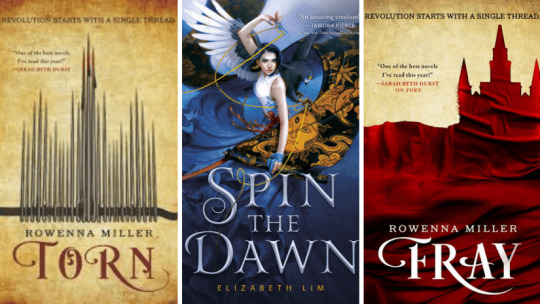
Feature Alana Joli Abbott
Jul 13, 2019
Fantasy Books
from Books https://ift.tt/2LPgbQg
0 notes
Text
Kids on Bikes: Deluxe Edition
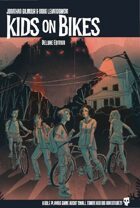
Publisher: Hunters Books
Young Adults, Small Towns...
BIG ADVENTURE!
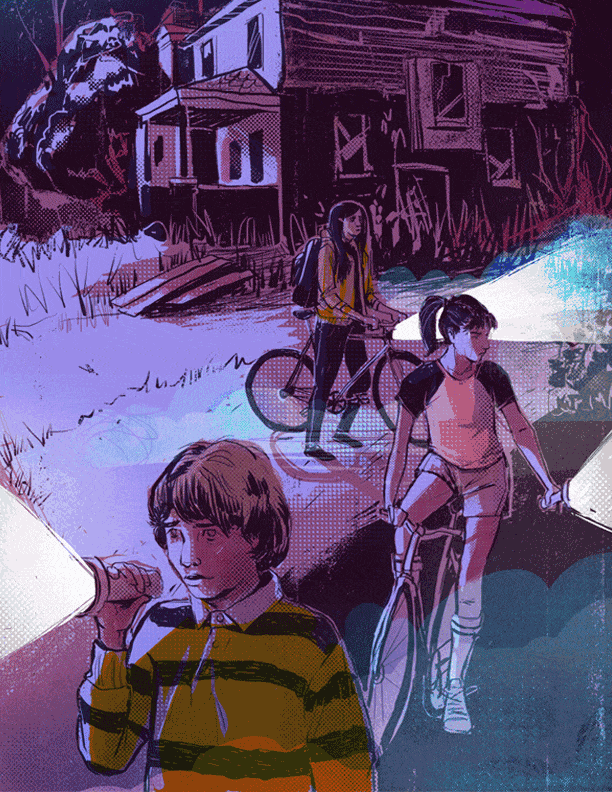
Kids on Bikes is a Collaborative World Building RPG set in small towns with big mysteries. Written and created by celebrated game designers Jon Gilmour (Dead of Winter, Atari: Centipede/Missile Command/Asteroids) & Doug Levandowski (Gothic Doctor, Seven Minutes in Hell). Kids on Bikes is a rules-light storytelling system that gets players into the action fast.
The Adventures of Kids on Bikes take place in small towns at any point in history before:
Everyone had a camera phone that could catch video of a Ghost
Use GPS to track a Homicidal Maniac roaming around town
Research an old creaky house in seconds using Google
Kids on Bikes takes place in a more mysterious time, where anything and everything *could* happen.
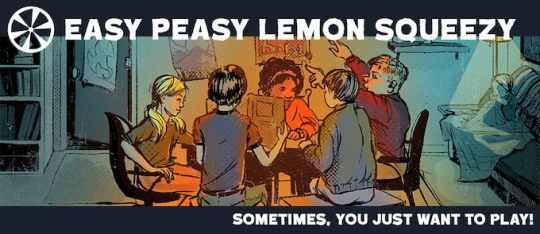
Kids on Bikes is a 60 page, rules-light, fast-paced storytelling game in the spirit of games like DREAD, Perseverant, MONSTERHEARTS, and other great indy titles. Kids on Bikes is perfect for game nights in which you want to get a game in RIGHT NOW.
Using stats like GRIT, CHARM, FIGHT, FLIGHT, BRAINS and BRAWN, you’ll jump into the action. Each skill is represented by a polyhedral die based on your character’s competence. More sides = better chance of success.

That being said, even low stats always have a chance of success, as any max result EXPLODES leading to an additional re-roll contributing to the results. Lower sided dice mean bigger chances of explosions!
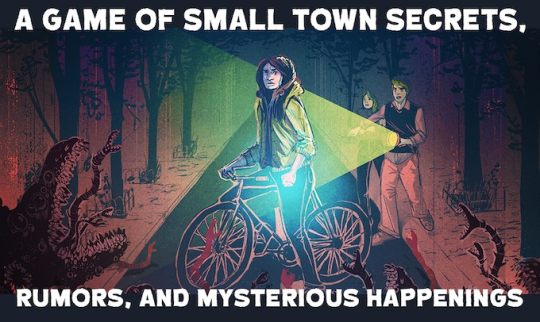
Character Creation
Character creation has always taken a full day to get you ready to start your first session. Kids On Bikes wants you to get started now - without losing connection or attachment to the characters you make.
Featuring an immersive town-creation process, you and the other players will create the setting for your game as you create your characters. Though you’ll start with Tropes you know and love (like the Brilliant Mathlete, the Popular Kid, or the Loner Weirdo), you’ll flesh your characters out by developing their relationships to each other and the town!
Did we forget to mention powered characters?
Kids on Bikes also features a character co-controlled by all of the players at the table. Using aspects of the character from the GM, players will share narrative control over what the character does - and when they use their mysterious, dangerous powers!
Players will more than likely need their powers to get you out of a pinch, and as you play more, the powered character will get stronger and stronger!
But be careful… using powers comes with a cost...
The Deluxe Edition of Kids on Bikes includes the following 'Adventure Prompts"
Dads on Mowers - Suburbtopia, USA by Banana Chan
Strange Things Afoot at the Circle Q - Carson Creek, COby Matt Colville
Lake Asibikaashi - Lake Asibikaashi, CO by Eddie Freeman
Snow Days at Chanky Cheez - Snowsville, NY by Jonathan Gilmour & Doug Levandowski
Nights at Garuda Lake - Garuda Lake, VT by Anton Kromoff
Talkeetna of Troubles - Talkeetna, AK by Kevin Kulp
Shadows From Sharon Hollow - Sharon Hollow, MI by Amanda Hamon Kunz
Pointing Pleasantly - Point Pleasant, NJ by Doug Levandowski
Boxcar Boys - Railroads of the USA by Kira Magrann
Welcome to Stahlsburg - Stahlsburg, RI by Sen-Foong Lim
Torn Memories - Elysium, FL by Nicholas Malinowski
The Snyder Sisters - Shephard, MI by Tamaria Montgomery, Bill West, and CyberLeo
What Lurks Beyond Southwood Drive? - Arlington Meadows, OH by Epidiah Ravachol
Starship Maurepas - Maurepas, LA by Jesse Roberge
Double Trouble at Skateland - Southridge, CA by Elisa Teague
Ghosts & Steel - East Berwick, PA by Josh Thaler
Minor Threat - Washington, DC by Ben Walker
The Culling in Cheyenne - Cheyenne, WY by Ross Watson
Between the Cracks - Spicerville, NY by Scott Woodard
Butter Tarts and Broken Bones - Tenapanguisine, ON by Jim Zub and the Danger Dice Gang
Price: $19.99
Kids on Bikes: Deluxe Edition published first on https://supergalaxyrom.tumblr.com
1 note
·
View note
Text
tag drop.
BILL X. LIM — one. / aesthetic.
BILL X. LIM — two. / answers.
BILL X. LIM — three. / games.
BILL X. LIM — four. / muse.
BILL X. LIM — five. / visage.
BILL X. LIM — six. / narrative.
narrative › muse name. / muse name › 001.
au revoir les enfants! that means fuck queue!
hold your horses honey. i’ve got coupons for the pringles. ( ooc. )
#BILL X. LIM — one. / aesthetic.#BILL X. LIM — two. / answers.#BILL X. LIM — three. / games.#BILL X. LIM — four. / muse.#BILL X. LIM — five. / visage.#BILL X. LIM — six. / narrative.#au revoir les enfants! that means fuck queue!#hold your horses honey. i’ve got coupons for the pringles. ( ooc. )
0 notes
Text
Strand 2: Topics in Film and Screen Studies
1. Narrative and Early Cinema
This seminar will examine the social, political and aesthetics implications of cinema’s transition during the first three decades of the twentieth century from a novelty form to a narrative medium. In doing so, it will consider Tom Gunning’s account of early cinema as displaying an ‘aesthetic of attractions’. We will also examine how the cinema developed its forms of storytelling and representation and how it evolved into a complex industry with Hollywood rapidly acquiring a dominant role. Crucial to this is thinking about changing exhibition practices and the emergence of new acting styles, as well as questions concerning spectatorship, subjectivity, and the codifications of gender and race. D.W. Griffith's Broken Blossoms (1919) will provide an opportunity to examine the consolidation of the Hollywood film industry in the years immediately after the end of the First World War: its product as a narrative cinema founded upon melodrama and the classical continuity system.
Screening
All the Lumière films in Early Cinema: Primitives and Pioneers (BFI)
Broken Blossoms (1919, dir. D.W. Griffith)
Reading
From The Silent Cinema Reader, ed. Lee Grieveson and Peter Krämer (London: Routledge, 2004):
Charles Musser, 'At the Beginning' (pp. 15-30)
Tom Gunning, '"Now you See It, Now You Don't": The Temporality of the Cinema of Attractions' (pp. 41-50)
Charles Musser, 'Moving towards Fictional Narratives: Story Films Become the Dominant Product' (pp. 77-85)
Linda Williams, 'Race, Melodrama, and The Birth of a Nation (1915)' (pp. 242-253)
Tom Gunning, 'The Cinema of Attractions: Early Film, its Spectator and the Avant-Garde', in Early Cinema: Space, Frame, Narrative, ed. Thomas Elsaesser (London: BFI Publishing, 1990), pp. 56-65.
Tom Gunning, 'Primitive Cinema: A Frame-Up? Or, the Trick's On Us,' in Early Cinema: Space, Frame, Narrative, ed. Thomas Elsaesser (1990), pp. 95-103.
Colin Harding and Simon Popple, 'Early responses to cinema', in In the Kingdom of Shadows: a Companion to Early Cinema (London; Madison, NJ: Cygnus Arts; Fairleigh Dickinson University Press, 1996), pp. 5-17.
Further Reading
Noël Burch, Life to those Shadows (Berkeley, CA: University of California Press, 1990).
Tom Gunning, D. W. Griffith and the origins of American narrative film : the early years at Biograph (Urbana, IL: Univerisity of Illinois Press, 1994).
Miriam Hansen, Babel and Babylon: Spectatorship in American Silent Film (Cambridge, MA: Harvard University Press, 1991).
Charlie Keil, Early American Cinema in Transition: Story, Style and Filmmaking (Madison, WI: University of Wisconsin Press, 1991).
2. The Question of National Cinema
Amongst the many definitions of art, national identity is not a category used very often. And yet, when it comes to cinema, the tendency to define films by their national origin is a default position. Why is that? What makes cinematic art more readily identified by its “nationality”? One of the most immediate answers to this question is the narrative nature of film as an art form that is closely connected to specific places and times that have specific identities. This session will address some of the connections between films and the societies and cultures they depict. By focusing on the small and manifestly ideological cinema of Israel the session will examine some of the elements that make up so-called national cinemas.
Screening
Siege (Matzor) (Gilberto Tofano, 1969)
Reading
Gertz, Nurit & Munk, Yael, 'Israeli Cinema Engaging the Conflict' in Film in the Middle East and North Africa: Creative Dissidence, ed. Josef Gugler (Austin: University of Texas Press, 2011), pp. 154-165.
Higson, Andrew. 'The concept of national cinema.' Screen 30:4 (1989), 36-47.
Hayward, Susan, 'Framing National Cinemas' in Cinema & Nation, ed. Mette Hjorte and Scott Mackenzie (London: Routledge, 2000), pp. 81-94.
Zanger, Anat, 'Filming National Identity, War and Woman in Israeli Cinema', in The Military and Militarism in Israeli Society, ed. Edna Lomsky-Feder and Eyal Ben-Ari (Albany, NY: University of New York Press, 1999), pp. 261-280. (Copies of this article are available to borrow from the MML Library issue desk)
Additional reading:
Jarvie, Ian, 'National Cinema, a Theoretical Assessment' in Cinema & Nation, ed. Mette Hjorte and Scott Mackenzie (London: Routledge, 2000), pp. 75-87.
Higbee, Will, and Song Hwee Lim. 'Concepts of transnational cinema: Towards a critical transnationalism in film studies', Transnational Cinemas 1:1 (2010): 7-21.
3. Historical context and interpretation
What does it mean to read a film “in context”? What are the distinctive methods required for a historical analysis of cinema and television? What are the gains of such an approach – and what are its limits? What notions of reality and temporality inform it? Drawing on Nietzsche’s reflections on the uses (and disadvantages) of history, historical materialism and Ideologiekritik as defined by Marx and members of the Frankfurt School, and Foucault’s concept of “counterhistory”, my aim in this seminar is to make a case both for the ineluctable historicity of film and its enormous relevance as a historical source. We will look at the ways in which particular films manifest the specific socio-economic conditions, the power relations, and the collective mentalities of the time in which they were made; but we will also discuss films that were agents in – rather than reflections of – the historical process and examine how they shaped the myths and memories and thus the collective consciousness and the Weltanschauung of a people. Finally, we will talk about the power of cinema and television to define not just our vision of the past, but our very idea of history.
Screening:
The Cabinet of Dr. Caligari (Robert Wiene, 1920)
Triumph of the Will (Leni Riefenstahl, 1935)
Downfall (Oliver Hirschbiegel, 2004)
Reading:
Siegfried Kracauer, 'Caligari', in Siegfried Kracauer, From Caligari to Hitler: A Psychological History of the German Film, ed. Leonardo Quaresima (Princeton, NJ; Oxford: Princeton University Press, 2004), pp. 61-77.
Brian Winston, 'Was Hitler There? Reconsidering "Triumph of the Will"', Sight and Sound 50:2 (Spring 1981), pp. 102-107.
David Denby, “Back in the Bunker: Downfall (2004) by Oliver Hirschbiegel”, The New Yorker (14 February 2005), pp. 259-261.
Marcia Landy, 'Introduction', in The Historical Film: History and Memory in Media (London: Athlone, 2001), pp. 1-25.
Rosenstone, Robert, 'Introduction', in Visions of the Past: The Challenge of Film to our Idea of History (Cambridge, MA; London: Harvard University Press, 1995), pp. 1-19.
Further reading:
Lotte Eisner, 'The Beginnings of the Expressionist Film', in The Haunted Screen: Expressionism in the German Cinema and the Influence of Max Reinhardt [1952], transl. R. Greaves (Berkeley and Los Angeles 1973), pp. 17-27
Taylor, Richard, 'Triumph of the Will', in Film Propaganda: Soviet Russia and Nazi Germany, 2nd rev. edn (London: I. B. Tauris, 1998), ch. 13, pp. 152-174.
Sabine Hake, 'Entombing the Nazi Past: On Downfall and Historicism', in Screen Nazis: Cinema, History, and Democracy (Madison, WI: University of Wisconsin Press, 2012), pp. 224-255.
Martin Ruehl and Karolin Machtans, 'Introduction', in Hitler – Films from Germany: History, Cinema and Politics since 1945 (New York: Palgrave Macmillan, 2012), pp. 1-35.
4. The Art of Non-fiction: Contemporary Documentary Cinema
Cinema, as Jean-Louis Comolli notes, began as documentary and documentary as cinema. Nevertheless, documentary remains a slippery, marginal filmic mode that pertains to the non-fictional world of knowledge and information while drawing on the resources of fiction, its roots identifiable in both scientific photographic inscription and Modernist avant-garde filmmaking. From the vantage of point of contemporary documentary filmmaking – seen as a continuation of a cinematic renaissance in the form reaching back to the 1990s – this session will explore the ways in which documentary film’s complex relation to reality may be understood, addressing in particular how today’s “golden age” of documentary may be thought in relation to the genealogy of the mode and its theorizations.
By considering a range of critical attempts to define or describe the documentary alongside the work of two contemporary filmmakers, Gianfranco Rosi and Nicholas Philibert, we will consider how cinematic documentary continues to make its historical “truth claim” while employing experimental techniques that complicate the kinds of knowledge promised by the mode. In doing so, this session will attend to issues central to the study of documentary and to that of film more broadly – realism and formalism, indexicality and the digital, spectatorship and subjectivity, narrative and temporality – as well as reflecting on how the increasingly hybrid forms of contemporary documentary both reprise and reinvent earlier cinematic traditions.
Screening
Fuocoammare (Gianfranco Rosi, Italy, 2016)
Retour en Normandie (Nicholas Philibert, France, 2007)
Reading
Bill Nichols, 'The domain of documentary' and 'Documentary modes of representation' in Representing Reality: Issues and Concepts in Documentary (Bloomington: Indiana University Press, 1991), pp. 3-75.
Jacques Rancière, ‘Documentary Fiction: Marker and the Fiction of Memory’ in Film Fables (Oxford: Berg, 2006), pp. 157-170.
Erika Balsom, 'The reality-based community', e-flux 83 (June 2017).
Further reading
Nico Baumbach, ‘Jacques Rancière and the fictional capacity of documentary’, New Review of Film and Television Studies, 8:1 (2010), pp. 57-72
Elizabeth Cowie, Recording Reality, Desiring the Real (Minneapolis: Minnesota University Press, 2011)
Dirk Eitzen, ‘When Is a Documentary?: Documentary as a Mode of Reception’, Cinema Journal, 35:1 (1995), p. 81-102
Bill Nichols, Introduction to Documentary, 3rd edn. (Bloomington, IN: Indiana University Press, 2017)
Bill Nichols, ‘Documentary Film and the Modernist Avant-Garde’, Critical Inquiry, 27:4 (2001), pp. 580-610
Michael Renov, ‘Towards a Poetics of Documentary’ in Theorizing Documentary (London: Routledge, 1993), pp. 12-36
Linda Williams, ‘Mirrors without Memories: Truth, History, and the New Documentary’, Film Quarterly, 46:3 (1993), pp. 9–21
Brian Winston, Claiming the Real II. Documentary: Grierson and Beyond (London; New York: BFI; Palgrave Macmillan, 2008)
Brian Winston, ed., The Documentary Film Book (Basingstoke: Palgrave, 2013) – see foreword by Nick Fraser and chapters by Brian Winston (‘Life as Narrativised’) and Carl Plantinga (‘“I’ll believe it when I trust the source”: Documentary Images and Visual Evidence”) in particular.
Further viewing:
The Act of Killing (Joshua Oppenheimer, 2012, Norway/Denmark/UK)
The Arbor (Clio Barnard, 2010, UK)
Dreams of a Life (Carol Morley, 2011, UK)
Innisfree (José Luis Guerín, 1990, Spain)
5. Sound and Music
This seminar will explore the ways in which sound and music have been conceptualised and employed in cinema. Significant (and often mutually resistant) strands in the literature will be surveyed and analyzed with specific reference to Carol Reed's The Third Man (1949) and Yuri Norstein's Tale of Tales (1979), which all students should experience prior to the class.
Screening
The Third Man (Carol Reed, 1949)
Tale of Tales (Yuri Norstein, 1979)
Reading
On sound and music
Cohen, A. 'Film Music from the Perspective of Cognitive Science’. In D. Neumeyer (Ed.), The Oxford handbook of film music studies (Oxford: Oxford University Press, 2014), pp. 96-130.
Kalinak, K.. Film music: a very short introduction (Oxford: Oxford University Press, 2010).
On The Third Man
Drazin, C. In search of The Third Man (London: Methuen, 1999).
On The Tale of Tales
Kitson, C. Yuri Norstein and Tale of Tales: an Animator's Journey. (Bloomington and Indianapolis, IN: Indiana University Press, 2005).
Further reading
On sound and music
Boltz, M. G. 'The cognitive processing of film and musical soundtracks', Memory & Cognition, 32:7 (2004), 1194-1205.
Buhler, J., & Neumeyer, D. 'Music and the Ontology of the Sound Film: The Classical Hollywood System'. In D. Neumeyer (Ed.), The Oxford handbook of film music studies (Oxford: Oxford University Press, 2014), pp. 17-43.
Cohen, A. 'Film Music from the Perspective of Cognitive Science’. In D. Neumeyer (Ed.), The Oxford handbook of film music studies (Oxford: Oxford University Press, 2014), pp. 96-130.
Costabile, K. A., & Terman, A. W. 'Effects of Film Music on Psychological Transportation and Narrative Persuasion', Basic and Applied Social Psychology, 35:3 (2013), 316-324.
Hasson, U., Landesman, O., Knappmeyer, B., Vallines, I., Rubin, N., & Heeger, D. J. 'Neurocinematics: The Neuroscience of Film'. Projections, 2:1 (2008), 1-26.
Hoeckner, B., Wyatt, E. W., Decety, J., & Nusbaum, H. 'Film music influences how viewers relate to movie characters'. Psychology of Aesthetics, Creativity, and the Arts, 5:2 (2011), 146-153.
Kassabian, A. Hearing film: tracking identifications in contemporary Hollywood film music (London: Routledge, 2001).
Katz, M. B. Drawing the Iron Curtain: Jews and the Golden Age of Soviet Animation (New Brunswick, NJ: Rutgers University Press, 2016).
Tan, S.-L., Spackman, M. P., & Bezdek, M. A. 'Viewers' Interpretations of Film Characters' Emotions: Effects of Presenting Film Music Before or After a Character is Shown'. Music Perception, 25:2 (2007), 135-152.
Winters, B. 'The Non-diegetic Fallacy: Film, Music, and Narrative Space'. Music and Letters, 91:2 (2010), 224-244.
On The Third Man
Gomez, J. A. 'The Third Man: Capturing the visual essence of literary conception', Literature/Film Quarterly, 2:4 (1974), 332-340.
O’Connell, D. C., & Kowal, S. 'Laughter in the film "The Third Man"', Pragmatics, 16:2/3 (2006), 305-327.
Scholz, A.-M. '"Eine Revolution des Films": The Third Man (1949), The Cold War and Alternatives to Nationalism & Coca-colonization in Europe', Film & History: An Interdisciplinary Journal of Film and Television Studies 31:1 (2001) ,44-53.
Schwab, U. 'Authenticity and ethics in "The Third Man"', Literature/Film Quarterly, 28:1 (2000), 2-6.
Van Wert, W. F. 'Narrative structure in The Third Man', Literature/Film Quarterly, 2:4 (1974), 341-346.
On The Tale of Tales
Katz, M. B. Drawing the Iron Curtain: Jews and the Golden Age of Soviet Animation (New Brunswick, NJ: Rutgers University Press, 2016).
Landesman, O., & Bendor, R. 'Animated Recollection and Spectatorial Experience in Waltz with Bashir', Animation, 6:3 (2011), 353-370.
MacFadyen, D. '"Skazka skazok"/"Tale of Tales"'. In S. Bodrov & B. Beumers, eds., The cinema of Russia and the former Soviet Union (London: Wallflower Press, 2007), pp. 183-192.
Moritz, W. 'Narrative Strategies for Resistance and Protest in Eastern European Animation'. In J. Pilling, ed., A Reader in Animation Studies (New Barnet: John Libbey Publishing, 1997), pp. 38-47.
Wells, P. Understanding animation. (London: Routledge, 1998).
6. Cinema and (Urban) Space
This seminar will examine the symbiosis between film and space, with a particular focus on the urban, taken as part of a broader problematic concerned with representations of space and spaces of representation (to use the terms coined by Lefebvre). We will look at theories of urban and global/geopolitical space, from David Harvey and Ed Soja to Fredric Jameson, and consider some key moments in which the mutual constitution of cinema and city is manifest, with a major film from the silent era, a 1950s film noir parody set in Mexico, and a key example of cyberpunk from the 1980s.
Screening
Metropolis (Fritz Lang, 1926)
The Criminal Life of Archibaldo de la Cruz (Luis Buñuel, 1955)
Blade Runner (Ridley Scott, 1982/1992/2007 - watch the Final Cut version from 2007)
Reading
David Harvey, 'Time-space Compression and the Rise of Modernism as a Cultural Force' and 'Time- space Compression and the Postmodern Condition', in The Condition of Postmodernity: An enquiry into the origins of cultural change (Oxford: Blackwell, 1990), pp. 260-307.
Edward W. Soja, 'Six Discourse on the Postmetropolis', in Imagining Cities: Scripts, Signs and Memory, ed. Sallie Westwood and John Williams (London; New York: Routledge, 1997), pp. 19-30.
Fredric Jameson, 'Totality as Conspiracy', in The Geopolitical Aesthetic: Cinema and Space in the World System (London: BFI, 1992)
Further Reading
Marc Augé, Non-Places: An Introduction to Supermodernity (London: Verso, 2008 [1992])
Certeau, Michel de, The Practice of Everyday Life (Berkeley & Los Angeles: University of California Press, 1984)
Manuel Castells, “The Space of Flows”, in The Rise of the Network Society, 2nd edn. (Chichester; Malden, MA: Wiley-Blackwell, 2010), pp. 407-59
David B. Clarke, ed., The Cinematic City (London: Routledge, 1997)
Derek Gregory, Geographical Imaginations (Oxford: Blackwell, 1994)
David Harvey, The Condition of Postmodernity: An enquiry into the origins of cultural change (Oxford: Blackwell, 1990)
David Harvey, Spaces of Capital: Towards a Critical Geography (Edinburgh: Edinburgh University Press, 2001)
David Harvey, Spaces of Hope (Edinburgh: Edinburgh University Press, 2000)
Henri Lefebvre, The Production of Space (Oxford: Blackwell, 1991 [1974])
Christoph Lindner, ed., Globalization, Violence, and the Visual Culture of Cities (London: Routledge, 2009)
Doreen Massey, Space, Place and Gender (Minneapolis: University of Minnesota Press, 1994)
Doreen Massey, For Space (London: Sage, 2005)
Barbara Mennel, Cities and Cinema (London: Routledge, 2008)
Vincent Mosco, The Digital Sublime: Myth, Power, and Cyberspace (Cambridge, MA: MIT Press, 2004)
Mark Shiel and Tony Fitzmaurice, eds., Cinema and the City: Film and Urban Societies in a Global Context (Oxford: Blackwell, 2001)
Neil Smith, Uneven Development: Nature, Capital and the Production of Space, 3rd. edn. (London: Verso, 2010)
Edward W. Soja, Postmodern Geographies: The Reassertion of Space in Critical Social Theory (London: Verso, 1989)
Edward W. Soja, Thirdspace: Journeys to Los Ángeles and Other Real-and-Imagined Places (Oxford: Blackwell, 1996)
Edward W. Soja, Postmetropolis: Critical Studies of Cities and Regions (Oxford: Blackwell, 2000)
Barney Warf and Santa Arias, eds., The Spatial Turn: Interdisciplinary Perspectives (London; New York: Routledge, 2009)
Sophie Watson and Katherine Gibson, eds., Postmodern Cities and Spaces (Oxford: Blackwell, 1995)
7. Cinema and Decolonization
Their strategies will be compared with very different ones employed in other key political films of the 1960s, by Jorge Sanjinés (Bolivia) and Glauber Rocha (Brazil), among others. We will trace how certain techniques associated with Soviet montage, European neorealism or the avantgarde are taken up or reworked in African and Latin American cinemas to create an innovative aesthetics to underpin a politics of liberation. These films continue to incite controversy in our own time for their depiction of political violence and its role in revolution, and/or for their representation of indigenous culture and subjectivity. Made with ‘the camera in one hand and a rock in the other’ (Rocha), many of these films are marked by a sense of immediacy and political exigency that binds them to a certain geopolitical space and a moment in history; nevertheless, their legacy is still evident in political filmmaking in world cinema today.
Screening
The Battle of Algiers (Gillo Pontecorvo, Italy-Algeria, 1966)
La hora de los hornos/The Hour of the Furnaces (Fernando Solanas and Octavio Getino, Argentina, 1968) – Part I only (90 mins)
Reading
Fernando Solanas and Octavio Getino, ‘Towards a Third Cinema: Notes and Experiences for the Development of a Cinema of Liberation in the Third World’, in Michael T. Martin, ed., New Latin American Cinema [Vol. One: Theory, Practices and Transcontinental Articulations ] (Detroit: Wayne State University Press, 1997), pp. 33-58.
Robert Stam, ‘The Hour of the Furnaces and the Two Avant-Gardes’, in Julianne Burton, ed., The Social Documentary in Latin America (Pittsburgh: University of Pittsburgh Press, 1990), pp. 251-66.
Nicholas Harrison, ‘Pontecorvo’s “Documentary” Aesthetics’, in Interventions 9:3 (2007): 389-404.
Further Reading
Nicholas Harrison, ‘Yesterday’s Mujahiddin: Gillo Pontecorvo’s The Battle of Algiers (1966)’, in Rebecca Weaver-Hightower and Peter Hulme, eds, Postcolonial Film: History, Empire, Resistance (New York and London: Routledge, 2014), pp. 23-46.
Patrick Harries, ‘The Battle of Algiers: Between Fiction, Memory and History’, in Vivian Bickford-Smith and Richard Mendelsohn, eds, Black and White in Colour: African History on Screen (Oxford: James Curry and Athens, OH: Ohio University Press, 2007), pp. 203-222.
David William Foster, Latin American Documentary Filmmaking: Major Works (Tucson: The University of Arizona Press, 2013) – chapter on La hora de los hornos
Jorge Sanjinés, ‘Problems of Form and Content in Revolutionary Cinema’, in Michael T. Martin, ed., New Latin American Cinema [Vol. One: Theory, Practices and Transcontinental Articulations] (Detroit: Wayne State University Press, 1997), pp. 62-70.
Frantz Fanon, ‘On Violence’, in The Wretched of the Earth, trans. Richard Philcox. New York: Grove Press, 2004.
Aimé Césaire, Discourse on Colonialism, trans. Joan Pinkham (New York: Monthly Review Press, 1972)
Ranjana Khanna, ‘The Battle of Algiers and The Nouba of the Women of Mont Chenoua: From Third to Fourth Cinema’ in Third Text, 12:43 (1998), 13-32.
Mike Wayne, chapter on ‘Third Cinema as Critical Practice: A Case Study of The Battle of Algiers’, in Political Film: The Dialectics of Third Cinema (London: Pluto Press, 2001), pp. 5-24.
David M. J. Wood, ‘Indigenismo and the Avant-garde: Jorge Sanjinés’ Early Films and the National Project’, Bulletin of Latin American Research 25:1 (2006), 63-82.
Jonathan Buchsbaum, ‘A Closer Look at Third Cinema’, in Historical Journal of Film, Radio and Television, 21:2 (2001), 153-66.
Ella Shohat and Robert Stam, Unthinking Eurocentrism: Multiculturalism and the Media (London and New York: Routledge, 1994), especially pp. 248-91
8. The Cinematic Exploration of Architectural Space
The seminar will consider how film can be used to explore changes in the architectural understanding of space that were central to emergence of the New Architecture after World War I. Starting with the explanation of architectural space offered by Sigfried Giedion's hugely popular Space Time and Architecture, the first half of the session will contrast the spatial composition of Charles Garnier's Opera House, Paris, one of the heroic celebrations of the Beaux Arts approach, with Le Corbusier's Villa Savoye, one of the best-known paradigms of the New Architecture of the 1920s.
The second half of the seminar will concentrate on Architectures d'Aujourd'hui (1930), a collaboration between film-maker Pierre Chenal and Le Corbusier. It constitutes Le Corbusier's most tangible foray into film-making and highlights the crucial contribution he made to the field of Cinema and Architecture as one of the first examples of 'narrative expressive space'. This will be illustrated by the analysis of the 'promenade architecturale' scene in the Villa Savoye.
Screening
Architectures d'Aujourd'hui (Pierre Chenal and Le Corbusier, 1930)
Set Reading:
Anthony Vidler, 'The Explosion of Space: Architecture and the Filmic Imaginary', Assemblage 21 (August 1993)
Further Reading:
Tim Benton. The Villas of Le Corbusier 1920-1930 (New Haven & London: Yale University Press, 1987), Chapter 2, pp. 43-82 & Chapter 4, pp. 144-217.
David van Zanten, 'Architectural Composition at the Ecole des Beaux-Arts from Charles Percier to Charles Garnier', in The Architecture of the Ecole des Beaux-Arts, ed. Arthur Drexler (London: Secker & Warburg, 1977), pp. 111-323.
Sigfried Giedion, Space Time and Architecture: The Growth of a New Tradition (Cambridge, MA: Harvard University Press, 1941)
Stephen Heath, 'Narrative Space' in Questions of Cinema (Indiana Press, 1981), pp. 19-75.
0 notes
Text
@cigvrettedvet / time skip from this thread, bill & mara / posted in beta!
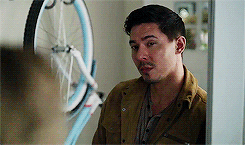
a couple of weeks later, and bill could now officially call mara his girlfriend. of course, she wasn't actually his girlfriend; it was all part of the character he played for her—the nice, rich man who wanted to take her away from everything and spoil her beyond her dreams. romance novel shit. he had been doing a good job so far; she had no idea who he really was or how the first time they met, it was actually with a gun to the back of her head and not in a laundry mat. it was all going according to plan, and yeah, maybe he was getting a little too into character. maybe he was starting to blur the lines between reality and acting. he just had to remind himself of why he was doing this. it was all so he—and his crew—wouldn't go to prison. that night, he approached mara's apartment door and knocked, waiting until she opened it. when she finally did, bill smiled brightly, "hey baby. are you excited for tonight?" he asked, waving the tickets to a broadway musical in his hand.
#cigvrettedvet#* STARTER / closed .#* BILL LIM / narrative .#* BILL LIM / thread / mara .#i figured we could take this either way! with her finding out or them just going on another cute date so i left it vague#queue are my queen rebecca!
17 notes
·
View notes
Text
character: bill
open: f/nb — 24+ only
plot: bill is a 35 year old gangster and kind of an all-around jerk. your muse is the stereotypical good girl that’s developed a huge crush on bill, but he really doesn’t deserve her admiration. ( could be neighbors, sister/relation of a friend, any sort of connection as long as they’re not gang affiliated or related to him. bound to get a lil toxic. )

the club behind him is still packed with people at one in the morning, and the only reason bill isn’t in there with the rest of the patrons is a strong need for a cigarette. by himself outside near the dumpsters, the sound of heels clicking on cement would be a surprise if girls didn’t constantly try to get inside by sneaking in the back. turning around, unlit cigarette hanging between his lips, his amused expression only grows when he realizes the heels in question are going past the door, walking up to him. bill laughs softly as he looks over and sees that it’s her, the girl that’s been hanging around him like a little puppy for three weeks now, dressed very differently from the bulky sweaters and high-waisted jeans she usually wears. “i hope you don’t think you’re going to get in for free just because you know me.” bill jokes, but he doesn’t actually care, she looks hot enough to bypass the forty dollar cover charge at the front door. producing a lighter from his jacket pocket, he quickly lights his cigarette, giving her a sidelong glance. “shouldn’t you be in bed right about now?”
#indie rp#indie roleplay#indie para rp#indie starter#open rp#indie crime rp#* starter. open.#* narrative. bill lim.#a lil repost to christen the new blog#i want this plot to finally happen okay gosh!!
6 notes
·
View notes
Text
character: bill / click on the source link for his information
open: f/nb — 24+ only
plot: bill is a 35 year old gangster and kind of an all-around jerk. your muse is the stereotypical good girl that’s developed a huge crush on bill, but he really doesn’t deserve her admiration. ( could be neighbors, sister/relation of a friend, any sort of connection as long as they’re not gang affiliated or related to him. bound to get a lil toxic. )

the club behind him is still packed with people at one in the morning, and the only reason bill isn’t in there with the rest of the patrons is a strong need for a cigarette. by himself outside near the dumpsters, the sound of heels clicking on cement would be a surprise if girls didn’t constantly try to get inside by sneaking in the back. turning around, unlit cigarette hanging between his lips, his amused expression only grows when he realizes the heels in question are going past the door, walking up to him. bill laughs softly as he looks over and sees that it’s her, the girl that’s been hanging around him like a little puppy for three weeks now, dressed very differently from the bulky sweaters and high-waisted jeans she usually wears. “i hope you don’t think you’re going to get in for free just because you know me.” bill jokes, but he doesn’t actually care, she looks hot enough to bypass the forty dollar cover charge at the front door. producing a lighter from his jacket pocket, he quickly lights his cigarette, giving her a sidelong glance. “shouldn’t you be in bed right about now?”
#indie rp#1x1 rp#indie para rp#indie starter#indie roleplay#open rp#indie crime rp#starter › open.#bill lim › narrative.#smoking tw#a repost but i wrote a lot today i can be lazy!
6 notes
·
View notes
Text
State of the Arts in Singapore: Where is the Periphery? by Jeffrey Say
“Histories, Practices, Interventions” book - co-edited with Seng Yu Jin, referencing the dominance of the state.
Singapore is designed, staged and engineered
- This even applies to creativity
- Rem Koolhaus describes it as “if there is chaos, it is authored chaos.”
- Singapore as a performative nation-state, spectacles of anguish
Brief History of Singapore Visual Art
- 1938: NAFA set up - schooled in Western art and Chinese ink tradition, the creation of a hybrid style called the Nanyang style, with local subject matter. First generation artists include Liu Kang and Georgette Chen.
- 1950s: Equator Art Society - nationalist, anti-colonialist, works depicting the poor, strikes against the British. Role downplayed as associated with leftist/Communist ideals, thus disbanded and abandoned social realist works. Chua Mia Tee was a member of the Equator Arts Society. An example of artwork produced then is “Epic Poem of Malaya” (1955) - students from the Chinese middle school were involved in strikes and riots, with Communist undertones.
- 1960s and ‘70s: Singapore art dominated by internationalism. Second generation artists influenced by overseas education. Beginnings of conceptual-based practices: Cheo Chai Hiang - “5′ x 5′ (Singapore River)” (1972) - submitted as a set of instructions to the president for the Modern Art Society, Ho Ho Ying. Following this, there were different iterations of the work.
- Late ‘80s: Artists adopted new mediums to make art. Rejection of formalism, incorporation of audience participation in a creative act.
- 1989: Policy paper on art and culture released by the Advisory Council on Culture and the Arts from a white paper.
- 1990: Substation founded by Kuo Pao Kun
- 1991: National Arts Council (NAC) set up
- 1993: National Heritage Board (NHB) set up
- 2000: Renaissance City Report released which positioned Singapore as a global arts city, released in three versions. The results were institutionalisation - the Singapore Art Museum (1996) and the Esplanade (2002)
The Economic Imperative
- EDB (1990) set up a Creative Services Strategic Business Unit, that led to the creation of Art Stage and Gilman Barracks
Emergence of Contemporary Art in Singapore
(1) The Artists’ Village (TAV)
- Founded by Tang Da Wu in 1988, in Sembawang
- Invited friends and students eg. Amanda Heng, Lee Wen, Zai Kuning - to visit, stay and use the space
- Housed 35 artists at its height, with 50 others participating in TAV activities
- “Interested in art as a continuous process” - T.K. Sabapathy
- Resistance against the commodification of art
- Lee Wen stated that there were four components: (1) concern for social issues (2) tolerance for uncertainty (3) improvisation (4) high regard for process-based art
- Original location was then earmarked for redevelopment
- “The Space” - Hong Bee Warehouse - where Vincent Leow performed his piece “The Three Legged Frog: Lifestyles of the Rich and Famous (1992) - wearing a suit laminated with US dollar bills - a critique of materialism and superstitious beliefs. Also Lee Wen’s “Yellow Man” (1999) - performed in Australia and Thailand, exaggerating ethnic identity - testing perceptions of race, identity and “Asian-ness”
(2) 5th Passage: AGA and Josef Ng incident
- 5th Passage (1991) by Suzann Victor, Susie Lingham and Han Ling, based in Parkway Parade
- 1993: organised Artist General Assembly, a 12-hour event
- Josef Ng’s protest piece against how 12 gay men were gated and arrested by police, then caned, which ended with the snipping of his pubic hair. He was then convicted for obscenity, fined, and could never perform again.
- Government ceased funding for performance art for the next 10 years, 5th Passage was blacklisted and evicted from Parkway
- Loo Zihan re-enacted the work in 2012, titled “Brother Cane” at Substation
Tang Da Wu performance “Don’t Give Money to the Arts” (1995)
- Approached President Ong Teng Cheong to don a jacket with the message on the back “Don’t Give Money to the Arts” and passed him a note which said “Dear Mr. President. I am an Artist, I am Important.” during an art fair, questioning cultural policy, state funding.
Substation
- Singapore’s first independent art space
- Peaked in the 1990s: incubator for research and process-based work
- Eg. Jason Lim and Ng Siew Kuen, “Three Tonnes of Clay” (1995)
- “an ideal of freedom and civic expression” - Audrey Wong describing the Substation
- Activism is circumspect (not openly adversarial) - T.K. Sabapathy
- “Critical obliqueness” - Russell Storer - questioning is not overt, conceptualist strategies/institutional critique
- Limitations of artists relying on government funds - limited artistic freedom
Contemporaneity
- Delicate balance of state tension. Artists focusing energy inwards leading to allusive and coded works that require a discerning audience - a comment by Tan Boon Hui, former director of SAM
- Overly conceptual work? Eg. “Mike” (2005) by Lim Tzay Chuen, “I Wanted to Bring Mike Over” - Singapore Pavilion at the 51st Venice Biennale
- Vertical Submarine - “Foreign Talent” (2007) - referencing the migrant worker contribution to Singapore development
Singapore Survey 2010: Beyond LKY, held at Gallery Valentine Willie
- Curatorial brief: imagine a world without LKY
- Jason Wee - “Self Portrait (No More Tears)” - a portrait of LKY made of shampoo bottle caps, referencing sanitisation in Singapore society. “Self Portrait (No. One Mr. Lee” - “My Father, Mr. Lee” plaque - a reference to paternalism
- Interesting how different forms of art are treated: Eg. Green Zeng: Malayan Exchange (Study of a Note of the Future) (2010) - notes with photos of political exiles, rewriting historical narrative versus “To Singapore with Love” by Tan Pin Pin - treatment of banned films
- Jimmy Ong, “Papa Can You Hear Me #7″ (2010) - playing cards with words from gay anthem “Papa Can You Hear Me?” from Barbara Streisand film - “self-censorship” using lyrics from a song versus his own words
- Sonny Liew: The Art of Charlie Chan Hock Chye
- S Chandrasekaran - addressing the challenges of performance art in Singapore
- “Golden Staircase” by Priyageetha Dia - eight steps of HDB covered in gold foil, was this considered art or vandalism?
1 note
·
View note
Note
☆ ♥ for bina ~
☆ : bill could tolerate his alcohol. he had never been a mormon good boy like his parents had hoped, drinking his first beer at the age of fifteen, and once he had joined the lobos, he could've swam in the amount of liquor the gang collectively ingested. the point was that it took a lot for bill to be drunk. somehow, that night, he had arrived at that point. he didn't even realize that he was calling yuna—labeled: do not fucking call her in his phone—until he reached her voicemail.
"are you sending my calls straight to voicemail or did you just get a new burner? because that would be messed up either way. i—uhhh—i'm down at lunar if you want to come by. it's a new club we just opened up a few weeks ago, if you were wondering. it's safer for people like us to call than it is to text, did you know that? harder to prove what was actually said, just that a call was made. i'm not some idiot, alright. i miss you. come by, 'kay? later."
once he hung up the phone, he noticed his friends laughing at him, saying that he was down bad. he laughed back, "she wants me. i know it."

♥ : it wasn't all fun and games. though bill often enjoyed the danger and adrenaline that came with being a member of the lobos, there were often situations that ended disastrously. a screwed up deal, a raid on one of their clubs, an ex-girlfriend that informed on the gang. occasionally it was bill's own fault. on such occasion, he might've wanted some comfort. there weren't many people that could provide it, though. he hadn't spoken to his mother in years, his sister had her own things to contend with, and none of the other lobos would've been open to emotional vulnerability. he called the one person he could think of that he had an emotional attachment to. (yuna had made her own feelings quite clear that she didn't have any feelings for him.)
"hey yuna. just callin' because... i don't really know. i guess i just wanted to tell you that it's okay if you don't love me back. you were probably right. we're not the sort of people that can love others, but i do anyway. no, you were right. i'm greedy and selfish and bad. straight up bad. it's okay. i'll get over it eventually. yeah, that's all i wanted to say. i'll see you around, maybe. g'night."
he hung up, expecting himself to cringe and feel ashamed. he didn't.

#fadinglights#* INBOX / answered .#* BILL LIM / narrative .#* BILL LIM / dynamic / yuna .#i was struggling in the phone gif department here lol. lewis tan use a phone in a show or something?? rude#that last one wasn't super loving but he's not a mushy kind of guy lmfao trust me it's as sweet as he can genuinely get!!#if he was faking it as a con it would be a different story hehe#anyway thanks for sending this in!! :)
2 notes
·
View notes
Text
@fadinglights / 030, an empty stretch of road beside a broken down car. / bill & yuna! / posted in beta.

bill was driving a silver audi r8 convertible, though it wasn't his. he didn't actually know who the car belonged to, but he didn't care. that was the primary nature of the los locos lobos, stealing cars off the street and chopping them up, or changing the plates and color to use for themselves. of course there were many more illegal avenues that the lobos took, but they started in car theft and it was still a very lucrative venture for them. that was the first thing he noticed, speeding past the woman on the side of the road. he could only assume car trouble from the steam that was rising from the hood. he noticed the car first, then her second. just from a brief glimpse, the woman quite literally stole his breath. bill slowed down, pulling off onto the shoulder and coming to a complete stop. after a minute of smoothing down his hair and making sure his glock was safely tucked away in the glove compartment, bill exited the audi. the heat hit him like a brick. pushing his sunglasses farther up his nose as he approached her, he smiled and then gestured towards the car behind her, "well, aren't you unlucky?" he laughed lightly, "maybe i can help you out?" despite his love of driving stolen cars, he wasn't actually that much of a mechanic, but he had to talk to her. bill thought he might've done anything to be in her presence.
#fadinglights#* STARTER / closed .#* BILL LIM / narrative .#* BILL LIM / thread / yuna .#i figured this could either be an alternate universe version of them meeting for the first time or#the actual canonical first meeting for our other bina thread... yuill? billuna? ship names are hard lmfao#bill/his gang is based out of los angeles but does a lot of business in vegas so i was envisioning a dusty road between the two cities
4 notes
·
View notes